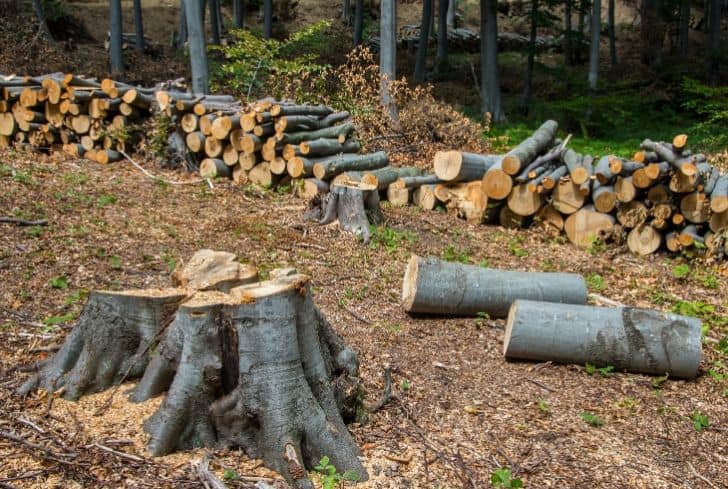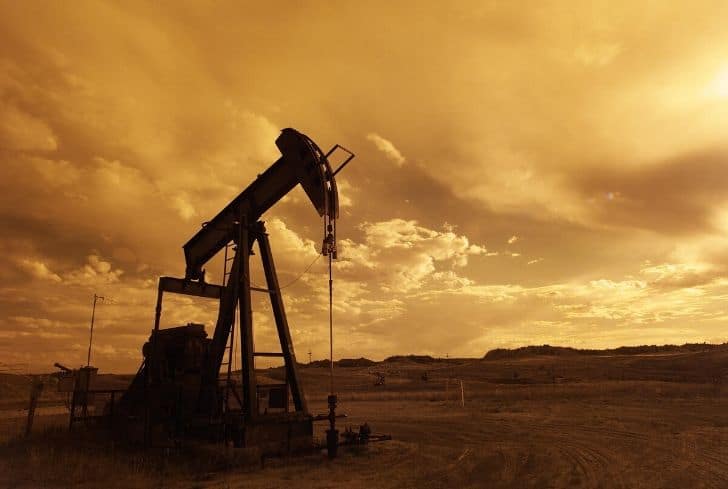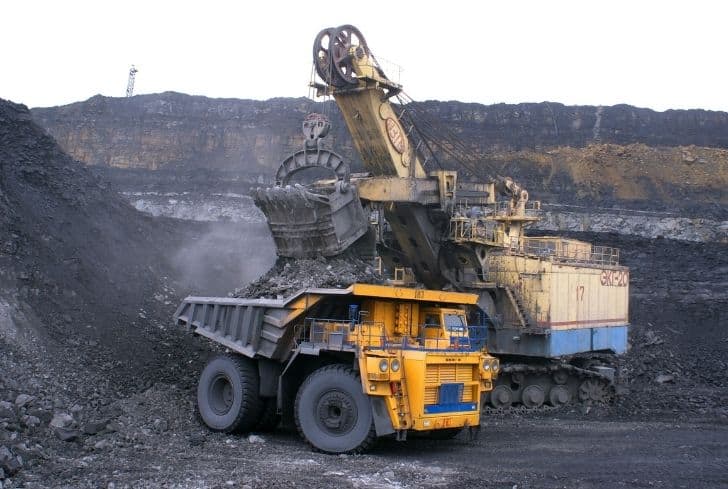The depletion of natural resources occurs when resources are consumed at a faster rate than their replacement. Natural resources are those resources that are in existence without human actions, and they can either be renewable or non-renewable.
When it gets down to the discussion of natural resource depletion, it is a term used in reference to water usage, farming, fossil fuel consumption, fishing, and mining. And above all, natural resource depletion is defined on the premise that the value of a resource is measured in terms of its availability in nature.
What is Resource Depletion?
Resource depletion happens when the consumption of renewable or non-renewable resources becomes scarce, as they are consumed at a faster rate than they can be replenished. The term resource deletion is most commonly used with fossil fuels, water usage, fishing, mining, logging etc.
Wikipedia defines resource depletion as,
“Resource depletion is the consumption of a resource faster than it can be replenished. Natural resources are commonly divided between renewable resources and non-renewable resources. Use of either of these forms of resources beyond their rate of replacement is considered to be resource depletion.“
A resource that is rare on earth due to depletion has a higher value than a natural resource that is in abundance. Due to the increasing global population, the levels of natural resource degradation are also increasing.
Consequently, the world’s eco-footprint is estimated to be one and a half times the ability of the earth to sustainably provide each individual with enough resources that meet their consumption levels. Herein is a detailed explanation of the causes, effects, and solutions of natural resource depletion.
Causes of Depletion of Natural Resources
1. Overpopulation
The total global population is more than seven billion people. Still, there is a consistent increase in the overall earth populace and this has been a critical factor in accelerating the depletion of natural resources. An increase in the populace expands the need for resources and conditions necessary to sustain it.
Even if everyone tried to adopt a correspondingly low material standard of living, with the population approaching eight billion, it would still cause the depletion of natural resources.

In addition, it contributes to increased ecological contamination. Research further indicates that developing countries are using more and more resources to industrialize and support their ever-increasing population. Hence, the depletion of natural resources will continue as long as the world population increases.
2. Poor Farming Practices
Humans are causing a lot of stress on land resources due to the over-reliance on food production for daily nutritional requirements. Poor irrigation practices, for example, are a key contributing factor to the salinization and alkalization of the soil that sustains plant growth.
Poor soil management practices and the use of heavy machinery and farming equipment also destroy the soil structure, making it unsuitable for plant growth. Due to the drastic soil vibrations and destruction, the fertile material vital to life is being destroyed.
Some farming practices, such as excessive use of pesticides, fungicides, and herbicides, equally kill important soil micro-organisms that are essential in replenishing nutrients in the soil. Furthermore, irresponsible farming leaves the soil vulnerable to soil erosion, which could further result to soil degradation.
3. Logging
The World Bank reported that the net loss of global forest between 1990 and 2016 was 1.3 million square kilometers. The gross loss every year that followed was around 13 million hectares, and by July 2022, the net loss of global forest was around 17 million hectares.
On the same note, tropical deforestation is estimated to occur at a rate of one percent annually, especially in the Latin American regions. People are clearing forests primarily for agricultural reasons due to the increase in population pressure.

Humans are also cutting down trees to make space for residential complexes and multiplexes. Through deforestation, the planet loses not only trees but also thousands of animals and great plant biodiversity due to the destruction of their natural habitats.
A lot of flora and fauna species have become rare, endangered or extinct over the years due to the said practice. Moreover, increased logging activities also lead to soil erosion that degrades natural soil minerals.
4. Overconsumption of Natural Resources
The 1760 industrial revolution saw large-scale mineral and oil exploration, and the practice has been gradually growing, leading to more and more natural oil and mineral depletion.
Together with the advancements in technology, development, and research in the contemporary era; exploitation of minerals has become easier and humans are digging deeper to access different ores. The increased exploitation of different minerals has led to some of them entering into a production decline.
For example, minerals such as gasoline, copper, and zinc production are estimated to decline in the next 20 years. Plus, oil mining continues to rise due to the upsurge in the number of engines that use petroleum, thereby magnifying its depletion.
The peak oil theory supports this fact by putting forward that there will come a time when the globe will experience uncertainties about alternative means of fuel owing to the over-harvesting of petroleum. When the peak of petroleum production is passed, an irreversible decline on the production rates will be faced.
5. Pollution
An increase in population and modern anthropogenic activities is a major contributor to the disposal of pollutants into the natural environment, and as such, the value of the natural environment is gradually exposed to degradation.
The soil, air, lakes, and seas are being contaminated with sewage, radioactive materials, and toxic chemicals, among other pollutants. Pollution can directly kill plants and animals, destroy the environment and cause further dilemmas, thus leading to natural resource depletion.
Uncontrolled releases of carbon monoxide, nitrous oxide, sulfur oxide, and carbon dioxide, for example, have resulted in the degradation of the ozone layer and global warming — environmental changes with their resultant depletive impacts on different natural habitats. Millions of different animal and plant species have thus lost their natural habitats and are on the verge of extinction.
6. Industrial and Technological Development
The present-day world is incessantly becoming industrialized as more and more countries make major technological breakthroughs. But as technological advancements continue, there is also a considerable growth in industries that release toxins and chemical by-products which are eventually deposited in lakes, oceans, soils, and lands.
Some of the industrial by-products are organic compounds, metals, radioactive materials, and other destructive wastes. As a result, the by-products and toxic materials alter natural habits such as aquatic systems and wildlife.
Examples of the impacts include acidic lakes, dead zones, and the death of wildlife as well as aquatic life. Industrial and technological advancements have also driven the demand for virgin materials for research, development, and production.
More resources are hence being used to satisfy industrial demands, increasing the rate of natural resource depletion. As the production of industrial materials and toxic waste increases, more habitats are being disturbed and destroyed, leading to a higher natural resource depletion rate.
Effects of Depletion of Natural Resources
1. Water shortages
Poor farming practices, deforestation, and pollution are major causes of water resource depletion due to contamination, wastage, and the destruction of natural water catchment areas.
As of today, approximately two billion people lack access to clean water because of the effects of deforestation and contamination of water sources and groundwater. Water shortages further contribute to famine and food insecurity.
Due to the lack of clean water access, there are around two billion cases of diarrhea among children younger than five years old, three million cases of cholera, and 11 million cases of typhoid fever. Moreover, a lot of water-related diseases and deaths are continuously occurring.
The growing water use of people globally at more than twice the rate of population increase is calling for heavy pressure and solutions to avoid further global problems.
2. Oil depletion
Oil is a nonrenewable resource that accounts for roughly 40 percent of the total global energy consumption. Oil is used for plenty of purposes, and together with technological advancements, it is being more frequently used than ever.
Research by EIA’s International Energy Outlook had shown that due to the high rate of oil exploitation, the amount of oil remaining would last for only 25 years. Moreover, EIA’s research stated that by 2030, oil consumption will be at 118 million barrels per day.
The energy consumption of humans is increasing rapidly while replacing the resources being used in energy production is still at a slow pace. Oil is an essential commodity in manufacturing, planting, mining, and transportation among many activities, and its depletion would be devastating.
The adverse effects of oil depletion include the fall of businesses, the high cost of living in developing countries, and uncertainty in the transport sector. Moreover, oil depletion could cause international tensions as everyone would want access to the remaining oil supply.
3. Loss of forest cover
Approximately 18 million acres of forest cover are destroyed annually. This means that half of the world’s natural forest cover has already been cleared and millions of animal and plant habitats are destructed.
Furthermore, studies indicate an increase in deforestation in the past three decades has resulted in a 12% to 17% rise in greenhouse gases globally. Due to the lack of trees to absorb carbon dioxide, global warming is becoming more severe.
Other devastating effects of deforestation include soil erosion, an increase in greenhouse gases leading to global warming, loss of biodiversity, increased flooding, and drought.
4. Depletion of minerals
There has been an increase in the exploitation of minerals such as phosphorus, gasoline, copper, and zinc, among others, to sustain the seven billion people on earth.
Studies by the Global Phosphorus Research Institute, for example, show that the earth could run out of phosphorus—an essential element for plant growth—in the next 50 to 100 years.
Studies by the United States Geological Survey also indicate that there is an increase in non-renewable resource consumption of natural minerals and construction materials such as copper, sand, gravel, and stone.
As the consumption of natural minerals increases, the cost of the materials also increases, while economic returns are shrinking. The economic impact of mineral depletion is likely to outweigh the drastic global warming.
5. Extinction of Species
Due to the changes in the living conditions of animals as a result of resource overexploitation and habitat degradation, some species may go extinct. Habitat destruction is one of the primary reasons why species of plants and animals are being endangered, or worse, extinct.
Forested regions are known to be habitats for thousands of animals, but deforestation is progressively destroying forest habitats. Practices such as overfishing and pollution have similarly led to a drastic reduction in the number of marine species such as tuna fish.
Some of the animals that have become extinct recently are the ivory-billed woodpecker, splendid poison frog, Lake Lanao freshwater fish, smooth handfish, bramble cay melomys, spix’s macaw, baiji, and western black rhinoceros. In the flora area, 32 orchid species and 65 North American plants became extinct.

Solutions to Depletion of Natural Resources
1. Controlling Deforestation
Programs aimed at checking against deforestation, such as REDD (Reducing Emissions from Deforestation and Forest Degradation), created by the World Bank, the New York Declaration on Forests, and the United Nations, are initiatives that could help reduce the depletion of natural resources.
The initiatives may also act as incentives for encouraging the general public to conserve forests as these are the habitat and protectors of some of the world’s unique plant and animal species and water sources, respectively.
Sustainability programs that aim to educate people about the importance of conserving natural resources should also be enacted as a way of focusing on the long-term risks associated with environmental degradation.
2. Reducing oil, mineral, and material consumption
Oil-rich countries, together with the World Bank, state, and consumables’ regulatory bodies, should join hands towards a common international objective of discussing how oil and mineral consumption, as well as exploitation, can be reduced.
Manufactures can, for instance, be trained on lean manufacturing (recycling, re-use, and reducing wastage) while consumers are sensitized on how to adopt re-use, reducing wastage, and recycling techniques.
3. More exploration and use of renewable sources of energy
Renewable sources of energy such as solar and wind power can be explored more and utilized to reduce the dependency on fossil fuel, which is a major cause of environmental pollution, climate change, global warming, and the destruction of natural habitats.
Through the exploration of different renewable sources of energy, a lot of technological innovations can be developed, which in turn could help reduce the use of natural nonrenewable resources.
4. Protecting wetlands and coastal ecosystems
Wetlands are regions saturated with groundwater that play a significant role in sustaining vegetation cover. The coastal and wetland ecosystems are thus vital in sustaining the food chain as they replenish water sources and avail minerals and nutrients for primary producers (green and flowering plants), essential for maintaining plant and animal biodiversity. Also, when coastal ecosystems are protected, they aid in controlling marine overfishing and protect coral reefs.
5. Sensitization and awareness creation
People must be educated on how their daily practices put a strain on scarce natural resources, as well as their individual contributions to resource depletion. The main purpose of creating awareness would be to encourage people to preserve and restore the natural environment by getting involved in conservation efforts.
Awareness education may be in the form of a symposium, creating videos for people to watch, writing articles and blog posts for people to read, or many other ways to educate everyone across the globe.






